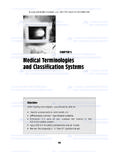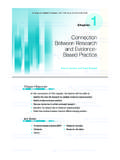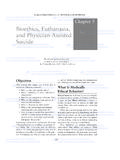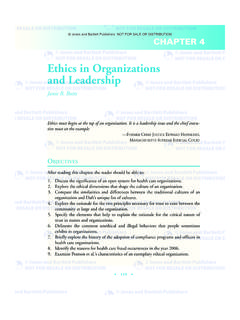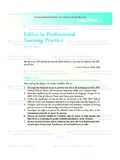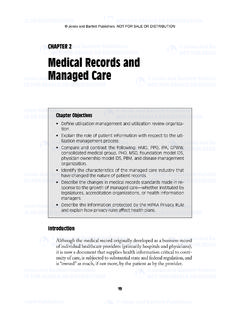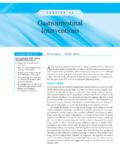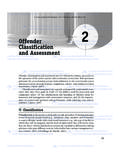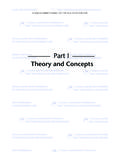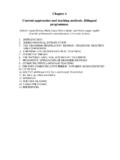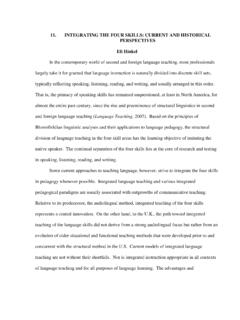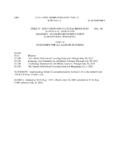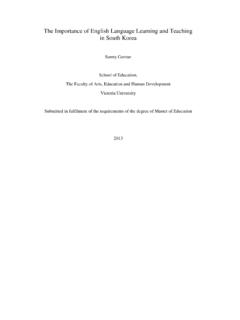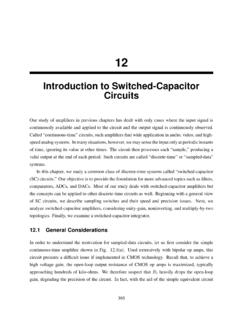Transcription of Chapter 3 Applying Learning Theories to Margaret …
1 Chapter 3 Applying LearningTheories toHealthcare PracticeMargaret TERMS Learning information processing Learning theory cognitive development respondent conditioning social constructivism systematic desensitization social cognition stimulus generalization cognitive-emotional perspective discrimination Learning role modeling spontaneous recovery vicarious reinforcement operant conditioning defense mechanisms escape conditioning resistance avoidance conditioning transference metacognition hierarchy of needs gestalt perspective therapeutic relationship51 Chapter HIGHLIGHTSA pplying Learning TheoriesBehaviorist Learning TheoryCognitive Learning TheorySocial Learning TheoryPsychodynamic Learning TheoryHumanistic Learning TheoryNeuropsychology and LearningComparison of Learning TheoriesCommon Principles of LearningHow Does Learning Occur?
2 What Kinds of Experiences Facilitate orHinder the Learning Process?What Helps Ensure That Learning BecomesRelatively Permanent?State of the 11/19/07 9:37 AM Page 5152 Chapter 3: Applying Learning Theories to Healthcare PracticeOBJECTIVESA fter completing this Chapter , the reader will be able to1. Differentiate among the basic approaches to Learning for each of the five Learning Define the principal constructs of each Learning Give an example Applying each theory to changing the attitudes and behaviors of learners ina specific Discuss how neuroscience research has contributed to a better understanding of Learning andlearning Outline alternative strategies for Learning in a given situation using at least two differentlearning Identify the differences and similarities in the Learning Theories specific to (a) the basic pro-cedures of Learning , (b) the assumptions made about the Learning , (c) the task of the educa-tor, (d) the sources of motivation, and (e)
3 The way in which the transfer of Learning defined in this Chapter as a relativelypermanent change in mental processing, emo-tional functioning, and/or behavior as a result ofexperience. It is the lifelong, dynamic process bywhich individuals acquire new knowledge orskills and alter their thoughts, feelings, atti-tudes, and actions. Learning enables individuals to adapt todemands and changing circumstances and iscrucial in health care whether for patients andfamilies grappling with ways to improve theirhealth and adjust to their medical conditions,for students acquiring the information and skillsnecessary to become a nurse, or for nurses andother healthcare staff devising and learningmore effective approaches to educating andtreating patients and each other in the significance of Learning to each indi-vidual s development, functioning, health andwell-being, debate continues about how learn-ing occurs, what kinds of experiences facilitateor hinder the Learning process, and what ensuresthat Learning becomes relatively the late 19th century.
4 Most of the dis-cussions and debates about Learning weregrounded in philosophy, school administration,and conventional wisdom (Hilgard, 1996).Around the dawn of the 20th century, the newfield of educational psychology emerged andbecame a defining force for the scientific studyof Learning , teaching, and assessment (Woolfolk,2001). As a science, educational psychology restson the systematic gathering of evidence or datato test Theories and hypotheses about Learning . A Learning theoryis a coherent framework ofintegrated constructs and principles thatdescribe, explain, or predict how people than offering a single theory of Learning ,educational psychology provides alternative the-ories and perspectives on how Learning 11/19/07 9:37 AM Page 52 Applying Learning Theories53and what motivates people to learn and change(Hilgard & Bower, 1966; Ormrod, 2004;Snowman & Biehler, 2006).
5 The construction and testing of Learning the-ories over the past century have contributedmuch to our understanding of how individualsacquire knowledge and change their ways ofthinking, feeling, and behaving. Reflecting anevidence-based approach to Learning , the accu-mulated body of research information can be usedto guide the educational process and has chal-lenged a number of popular notions and mythsabout Learning ( , Spare the rod and spoil thechild, Males are more intelligent than females, You can t teach an old dog new tricks. ). In addi-tion, the major Learning Theories have wide appli-cability and form the foundation of not only thefield of education but also psychological counsel-ing, workplace organization and human resourcemanagement, and marketing and used singly or in combination, Learning Theories have much to offer the practiceof health care.
6 Increasingly, health profession-als must demonstrate that they regularlyemploy sound methods and a clear rationale intheir education efforts, patient and client inter-actions, staff management and training, andcontinuing education and health promotionprograms (Ferguson & Day, 2005). Given the current structure of health care inthe United States, nurses, in particular, are oftenresponsible for designing and implementingplans and procedures for improving health edu-cation and encouraging wellness. Beyond one sprofession, however, knowledge of the learningprocess relates to nearly every aspect of daily Theories can be applied at the individ-ual, group, and community levels not only tocomprehend and teach new material, but also tosolve problems, change unhealthy habits, buildconstructive relationships, manage emotions,and develop effective Chapter reviews the principal psycho-logical Learning Theories that are useful to healtheducation and clinical practice.
7 Behaviorist, cog-nitive, and social Learning Theories are most oftenapplied to patient education as an aspect of pro-fessional nursing practice. It is argued in thischapter that emotions and feelings also needexplicit focus in relation to Learning in general(Goleman, 1995) and to health care in particular(Halpern, 2001). Why? Emotional reactions areoften learned as a result of experience, they playa significant role in the Learning process, andthey are a vital consideration when dealing withhealth, disease, prevention, wellness, medicaltreatment, recovery, healing, and relapse preven-tion. To address this concern, psychodynamicand humanistic perspectives are treated as learn-ing Theories in this review because they encour-age a patient-centered approach to care and addmuch to our understanding of human motiva-tion and emotions in the Learning Chapter is organized as follows.
8 First,the basic principles of Learning advocated bybehaviorist, cognitive, social Learning , psycho-dynamic, and humanistic Theories are sum-marized and illustrated with examples frompsychology and nursing research. With thecurrent upsurge and interest in neuroscienceresearch, brief mention is made of the contri-butions of neuropsychology to understandingthe dynamics of Learning and sorting out theclaims of Learning Theories . Next, the learningtheories are compared with regard to: Their fundamental procedures forchanging 11/19/07 9:37 AM Page 5354 Chapter 3: Applying Learning Theories to Healthcare Practice The assumptions made about the learner The role of the educator in encouraginglearning The sources of motivation for Learning The ways in which Learning is trans-ferred to new situations and problems Finally, the Theories are compared and then syn-thesized by identifying their common features andaddressing three questions: (1) How does learningoccur?
9 (2) What kinds of experiences facilitate orhinder the Learning process? (3) What helps ensurethat Learning becomes relatively permanent?While surveying this Chapter , readers are encour-aged to think of ways to apply the Learning theo-ries to both their professional and personal goals of this Chapter are to provide a con-ceptual framework for subsequent chapters inthis book and to offer a toolbox of approachesthat can be used to enhance Learning and changein patients, students, staff, and oneself. Althoughthere is a trend toward integrating Learning the-ories in education, it is argued that knowledge ofeach theory s basic principles, advantages, andshortcomings allows nurses and other health pro-fessionals to select, combine, and apply the mostuseful components of Learning Theories to specificpatients and situations in health care.
10 After com-pleting the Chapter , readers should be able toidentify the essential principles of Learning ,describe various ways in which the learningprocess can be approached, and develop alterna-tive strategies to change attitudes and behaviorsin different TheoriesThis section summarizes the basic principlesand related concepts of the behaviorist, cogni-tive, social Learning , psychodynamic, and hu-manistic Learning Theories . While reviewingeach theory, readers are asked to consider the fol-lowing questions: How do the environment and the inter-nal dynamics of the individual influencelearning? Is the learner viewed as relatively pas-sive or more active? What is the educator s task in the learn-ing process? What motivates individuals to learn? What encourages the transfer of learn-ing to new situations?
